Edinburgh, Scotland’s capital city, lends itself well to haunted and historical tours.
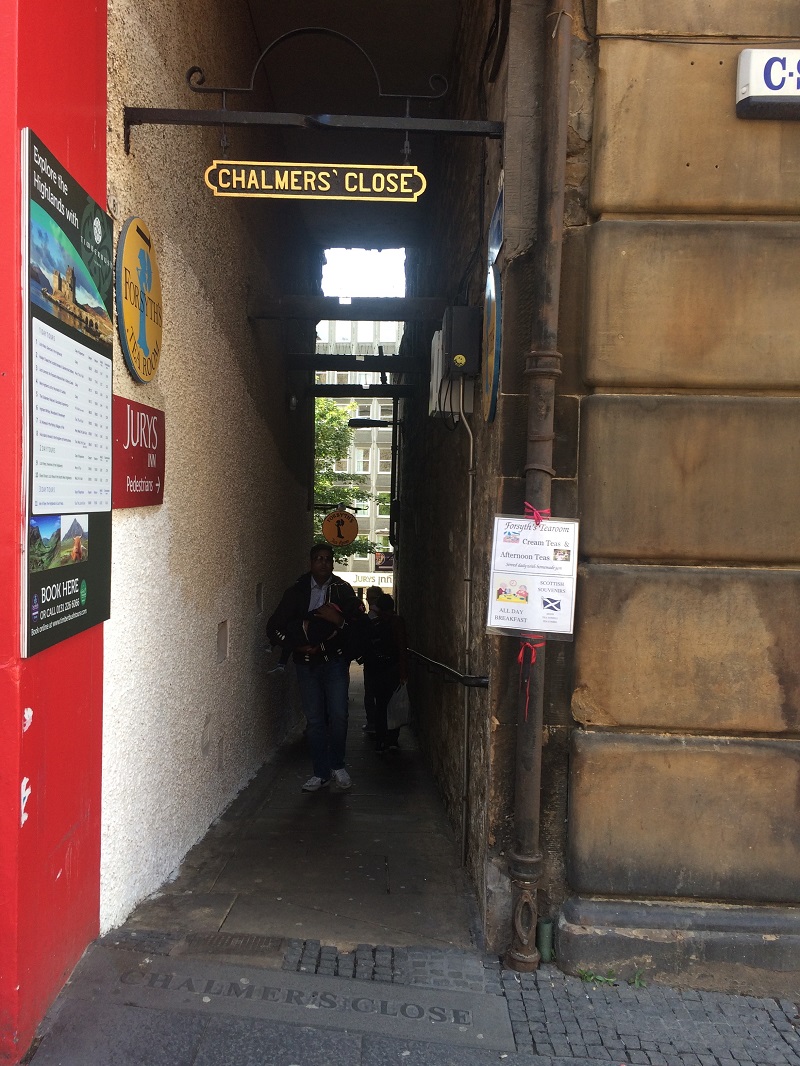
Walking tour stops at a close in Edinburgh – Photo Shelley Cameron-McCarron
Is ‘the watcher’ lurking in the shadows of the dark stone corridor ahead?
My youngest daughter is taking no chances, here in the airless, almost claustrophobic cavern beneath the streets of Edinburgh, Scotland’s beguiling capital city.
The normally bubbly, chatty tween grips my hand and squeezes closer as we huddle together in a dimly lit vault listening to Stephanie, our black-cloaked Mercat Tours guide, weave a tale of intrigue in the city’s underworld, where once the poorest of the poor, Edinburgh’s body snatchers, and criminal element found refuge.
“We are now standing in the most haunted room,” says Stephanie as we halt our passage through eerie, uneven, vaulted rooms formed in the 18th-century arches of the South Bridge. Here we crowd in, the sloping ceiling grazing our heads. Stephanie holds a wavering candle in the darkness.
My older children, almost entranced, fully engaged, never take their eyes off her.
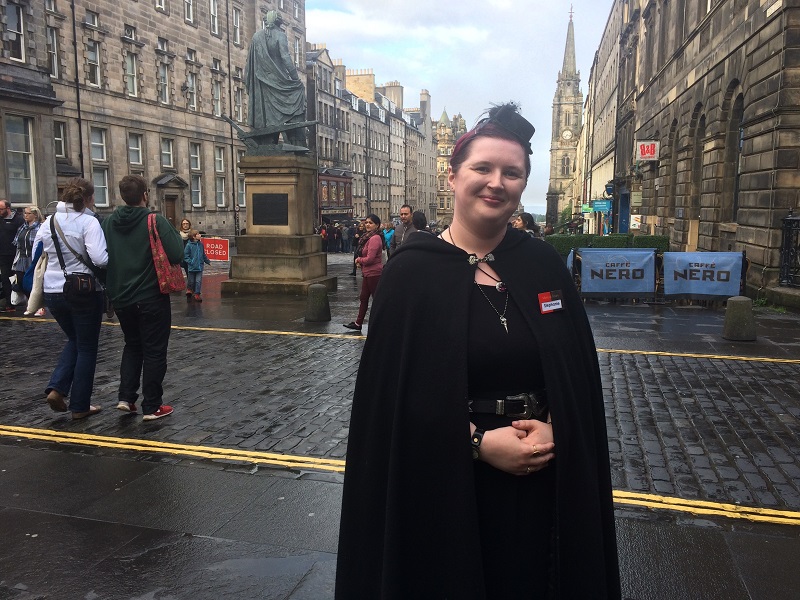
Edinburgh Mercat Tours guide Stephanie – Photo Shelley Cameron-McCarron
“The name given to the most haunted room is the White Room. The watcher favours this room,” she says to a hushed crowd, speaking of the spirit said to cause feelings of dread, who watches, watches, and sometimes pushes, or pulls hair, and is supposed to be at his strongest here in this room.
We cannot hear a thing of Edinburgh above, closed underground in a one-time slum, forgotten for over 100 years.
A 1985 excavation revealed this history, of the underground vaults originally home to businesses and taverns and then the poor and criminal as conditions worsened, and became tolerable only to the desperate. The environment became so bad, Stephanie says, people had to be forcibly removed.
“People have seen things down here,” she says as she regales with tales of voices and footsteps heard in the distance, the smell of lingering perfume, or cigar smoke, of the change in temperature from room to room, and spirits known to tug at pants or appear in photos.
We did not come to Edinburgh—gorgeous, enchanting, iconic Edinburgh—to take in a haunted tour, but it has become a highlight.
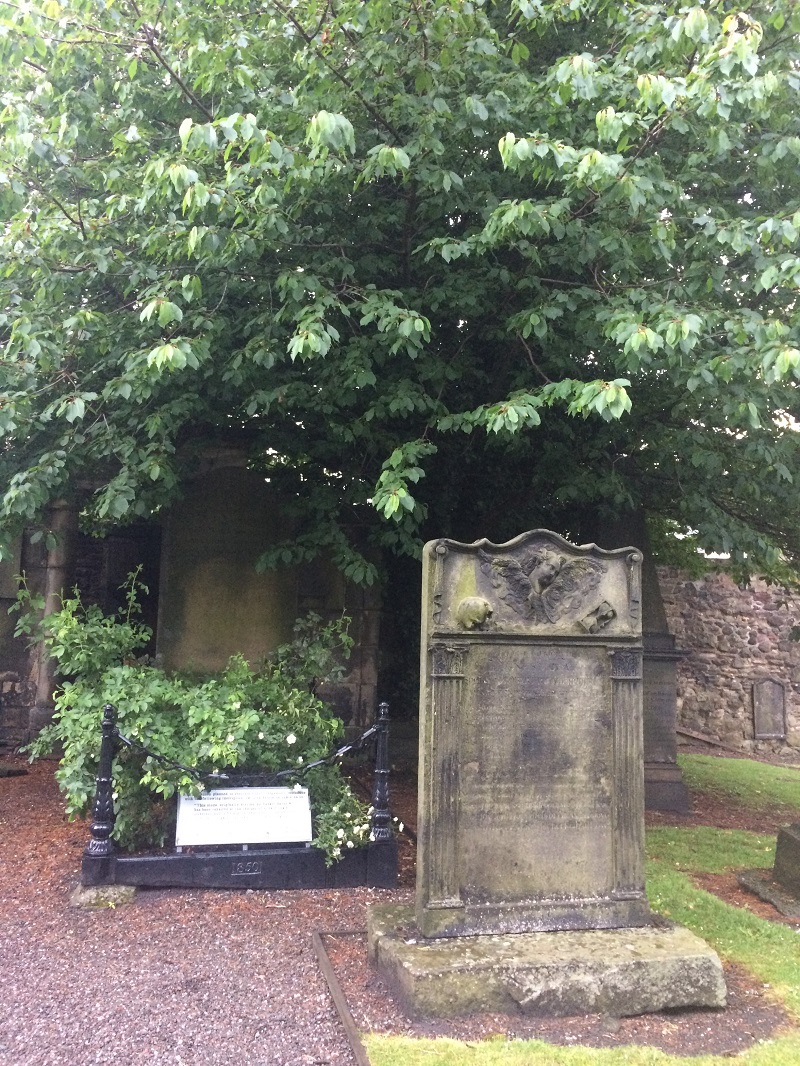
A grave in Canongate – Photo Shelley Cameron-McCarron
Edinburgh is a city of royal receptions, rebellions and riots, and it is filled with spine-tingling stories that lie above and below ground. We wanted to soak in this history.
Fortunately for visitors, a slew of ghost tours are available, and they’re all entertaining, especially the ones that run into underground areas of the city.
We heeded local recommendations to check out Mercat Tours for this and planned a night at Mary King’s Close, another underground attraction, which combines city history with atmospheric ghost stories. It’s said to be one of the city’s most haunted locales.
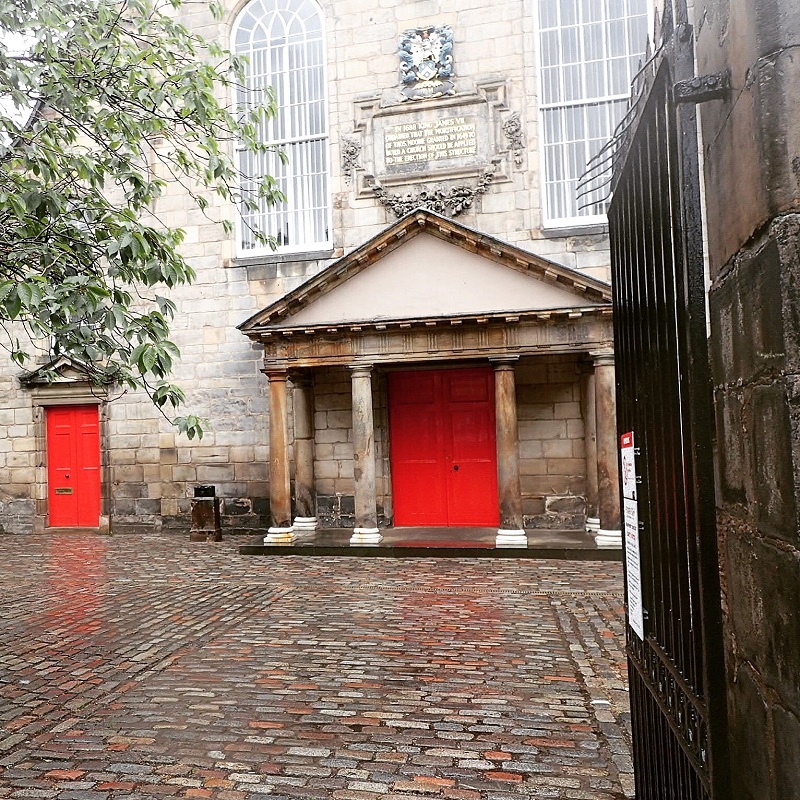
Canongate entry – Photo Shelley Cameron-McCarron
It’s only June on our visit, and we must sign up in advance for both tours, they’re that popular.
The lure?
Cannibals, body snatchers, witchcraft, and deals with the devil, sure, but the narrow, ancient, atmospheric streets of Old Town Edinburgh itself are certainly a draw, winding into alleyways and lanes known as closes and wynds, into centuries-old graveyards and onto preserved underground streets that once looked toward the skies.
Mercat Tours has several offerings. We opt for the ‘Doomed, Dead and Buried’ tour that takes participants into the haunted Blair Street Underground Vaults, into historic closes on the Royal Mile, and into Canongate Kirkyard, where Charles Dickens may have found inspiration for Ebenezer Scrooge. For there in the graveyard is the final resting place of “Ebenezer Scroggie—meal man.” When Dickens visited Edinburgh, perhaps in low light he misread it for ‘mean man,’ and the character for Scrooge was born in this very graveyard.
The tour is one of the best I’ve experienced. My teen and tweens love it all.
“I see some bloodlust in your eyes; I can work with that,” guide Stephanie says as we meet at Mercat Cross and dive right into the history of Edinburgh witches – 300 people alone burned alive at Edinburgh Castle – and tales of those believed to do the devil’s bidding.
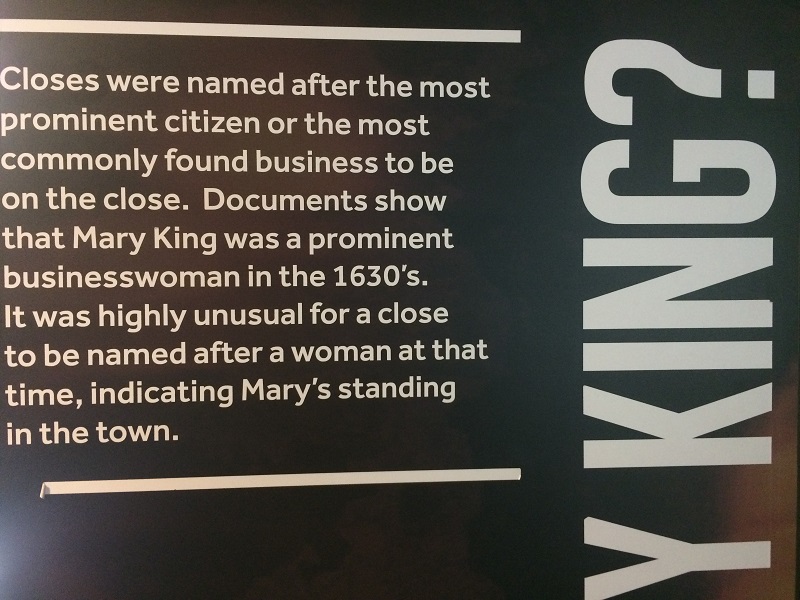
Sign at Mary King’s close Photo Shelley Cameron-McCarron
Genuine historical fact can be the most intriguing story of all, and at Real Mary King’s Close and on Mercat Tours, history shines through, entertaining and educating my kids at the same time.
At Real Mary King’s Close, a costumed character from the era leads visitors through a door, very much a portal into another world, as we descend into preserved alleys that run beneath the Royal Mile. These streets once opened to the sky, but are now closed in. We spend an hour exploring another time, learning of the underground close, ‘meeting’ some of its residents (including learning of the real-life Mary King) and glimpsing into day-to-day 17th century Edinburgh life.
We learn of living conditions and plague outbreaks when hysteria of the time believed the disease spread by evil spirits, and not the black rats so prevalent.
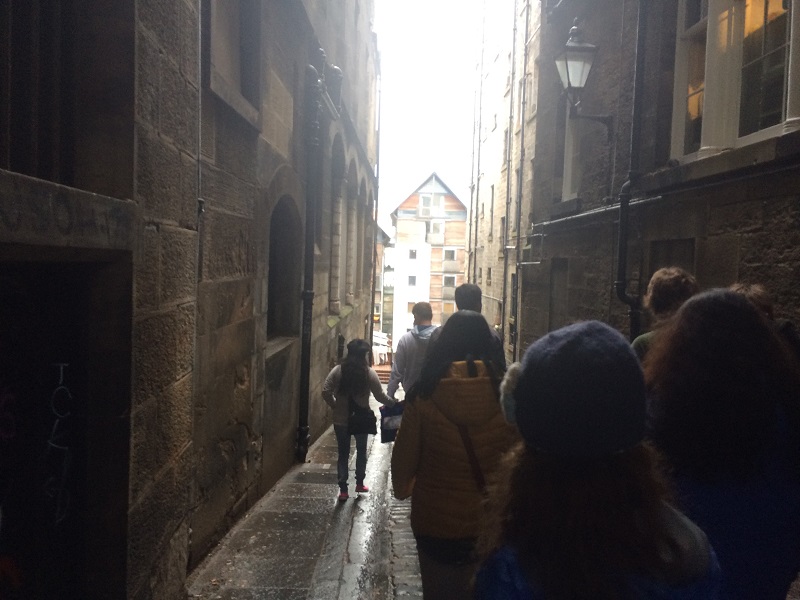
It’s here we learn of the all-too-real plagues, murder and intrigue over the city’s long history.
My kids learn about the disease and squalor that once existed during a time when residents fired their toilet waste into the streets twice a day, and animals were kept within the fortified city living alongside a swelling population. Overcrowding was once a significant problem as the centuries progressed, the number of people in Edinburgh grew, but the city’s walls did not.
On the Mercat evening walking tour, we wander into an ancient close, down a steep, narrow cobblestone street, and over to Chessels Court, for stops to hear of the dark past, and end in Canongate cemetery where many famous people are buried: Robert Fergusson the poet who inspired Robbie Burns; David Rizzio, lover of Mary Queen of Scots; and the cannibal of Canongate himself, James Douglas, 3rd Marquess of Queensberry.
Stephanie points out how several graves resemble prisons, with their iron bars stretched atop or across—bars meant to keep out the gravediggers looking for corpses for the medical schools. Body snatching had become a lucrative enterprise in Edinburgh under cover of darkness.

Grave in Canongate with iron bars to prevent against body snatching – Photo Shelley Cameron-McCarron
But all tales are not bad. Once indeed it may have saved a soul’s life, says Stephanie, when the tables turned and the body snatchers got the scare of their lives when a ‘corpse,’ thought to have passed on, awakened with their prying!
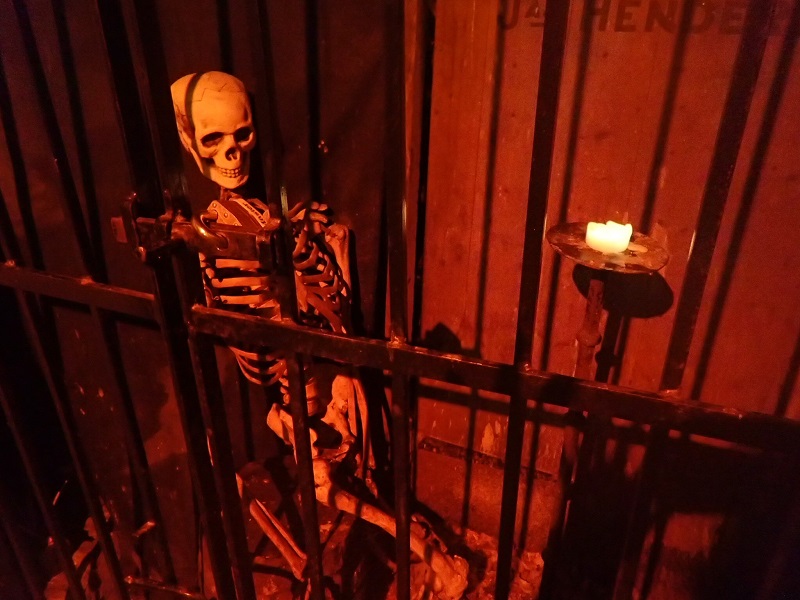
Photo Shelley Cameron-McCarron
Booking.com




